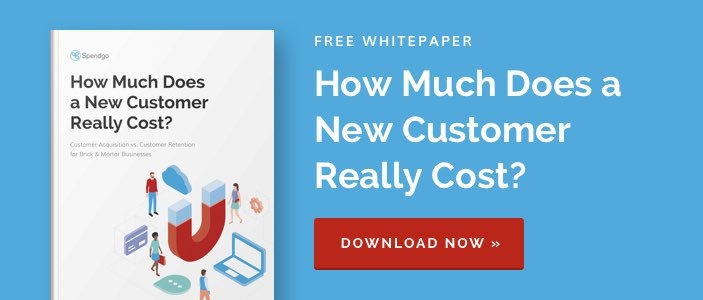Only a few short years ago, loyalty programs were billed as the be-all and end-all solution for the quick service restaurant industry’s woes. When they didn’t deliver instant results, a lot of restaurant owners and managers wrote off the whole loyalty project as a bust. In reality, most QSRs will benefit from a customer retention program, but only when it’s well suited for their business model and customer base.
As Deloitte puts it, restaurants should “understand what type of loyalty makes the most sense for them to pursue and cultivate.” That involves knowing your core group of customers top to bottom, and probing what makes that community unique. Based on that knowledge, you can come up with a program that meets your customer base where they are.

A quick serve restaurant loyalty program can do a lot, but there are issues even the best program can’t resolve on its own. Your stamp card promo won’t paper over more serious customer retention deficiencies, such as inconsistent product quality or rude customer service. A POS integration can’t make an unprofitable dish profitable, and it won’t magically deliver new customers where they don’t already exist.
How do you get started?
Here are some important factors that can determine the success of your loyalty program:
Profit margin
Loyalty promotions will fail if the discounts and offers provided mean the business will lose money every time the program reward is given. Surprisingly enough, this fundamental mistake is pretty common among QSRs.
In some instances, a manager drops the price of a special item below cost with the expectation that customers will buy other items to cover it. In others, they give a free reward or discount that outpaces the profit generated by that customer’s previous loyalty.
Even if the margin is razor thin, your giveaway should remain profitable (or, at minimum, break even). In order to maintain that margin, you need a loyalty program that is self sufficient — one that can deliver ROI while keeping operational costs down.
Quality of offer
A bad discount can be worse than no discount at all. By offering a loyalty reward that comes across as stingy or ungrateful, restaurateurs run the risk of insulting their fanbase.
Customer expectations vary from depending on the buyer community. Some customers will be excited by a 5% discount or a free gift that amounts to almost nothing. Many others will see that as an insult. Before you launch a loyalty promo, it’s important to understand your core audience, their tastes and values, and their buying tendencies.
Simplicity
The more user-friendly and straightforward a loyalty program is, the better. QSRs are all about speed and simplicity. The more steps you add to ordering and payment, the less interested your customer will be in participating.
Loyalty programs that require a PhD to understand are big turn-offs for QSR customers. The difference between filling out a membership application or downloading an app versus tapping a phone number into a register-side kiosk is enormous when it comes to driving participation.
Technology
User experience is something that can’t be easily quantified. However, it’s vital to the success of your loyalty program. A lot of restaurants will hire a developer who has little experience in UX to build their app. The result? Frustrated users who’d rather skip a discount than deal with the promo.
You want to create a seamless customer flow that won’t sabotage great deals you’re offering. Going with a company that has extensive UX and UI experience like Spendgo can make all the difference.
Data collection
Data generation is where digital loyalty programs stand out from more traditional stamp card systems. Big chain restaurants use apps and gift cards to generate massive amounts of buyer data, which they in turn use to tune up their promos.
Thankfully for indie QSRs and smaller chains, simple POS integration can track and document buying trends on a much smaller budget.
Loyalty programs can be very effective retention tools. However, other factors will impact the success of your promotion. A discount or free beverage won’t matter if your service and product are subpar. Similarly, a loyalty software interface that slows down lines and creates frustration won’t drive retention — in many cases, it’ll do the opposite. Finding the right loyalty promotion for your customer base takes time, but the rewards make it worthwhile.
How worthwhile? We compared customer retention costs to investment for new customer acquisition. Download our new whitepaper now.




